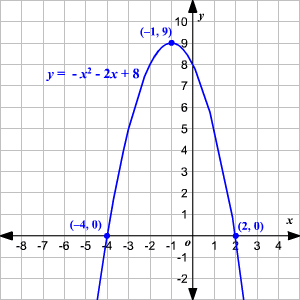The first series of videos will include explanations covering:
- what features of parabolas are of interest to mathematicians (and why),
- how to analyse quadratic equations to find these features (using a four-step procedure),
- how to understand and convert between three forms of quadratic equation (general form, factored form and completed square form), and the benefits of each,
- how to factorise quadratic equations,
- how to complete squares, and
- how and when to use the quadratic formula (and how to memorise it)
The second series will discuss parabolas as a locus of points obeying a geometric rule. I will explain how to understand and use equations of the form x² = 4ay and how to draw their graphs accurately.
The third series will discuss the parametric representation of the parabola and how to understand it. It will also show how to deduce some geometric properties of parabolas using this form.
The compete set of three series should prepare students fairly thoroughly for the NSW Higher School Certificate in Australia and help students achieve high competency with this topic.
I hope you enjoy the material.









 Quadratic equations, when graphed, produce parabolas.
Quadratic equations, when graphed, produce parabolas.